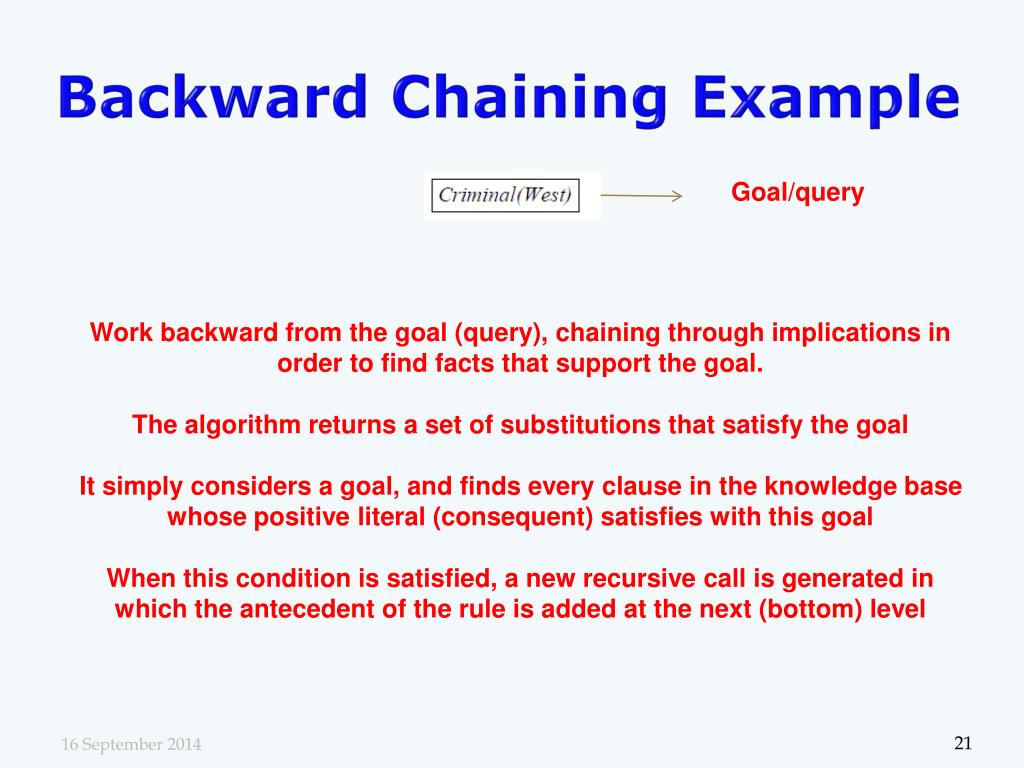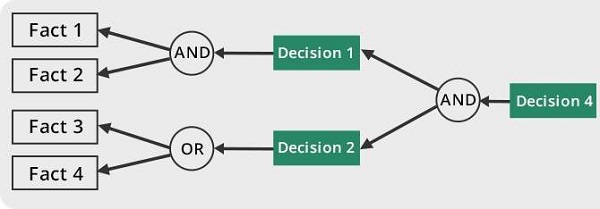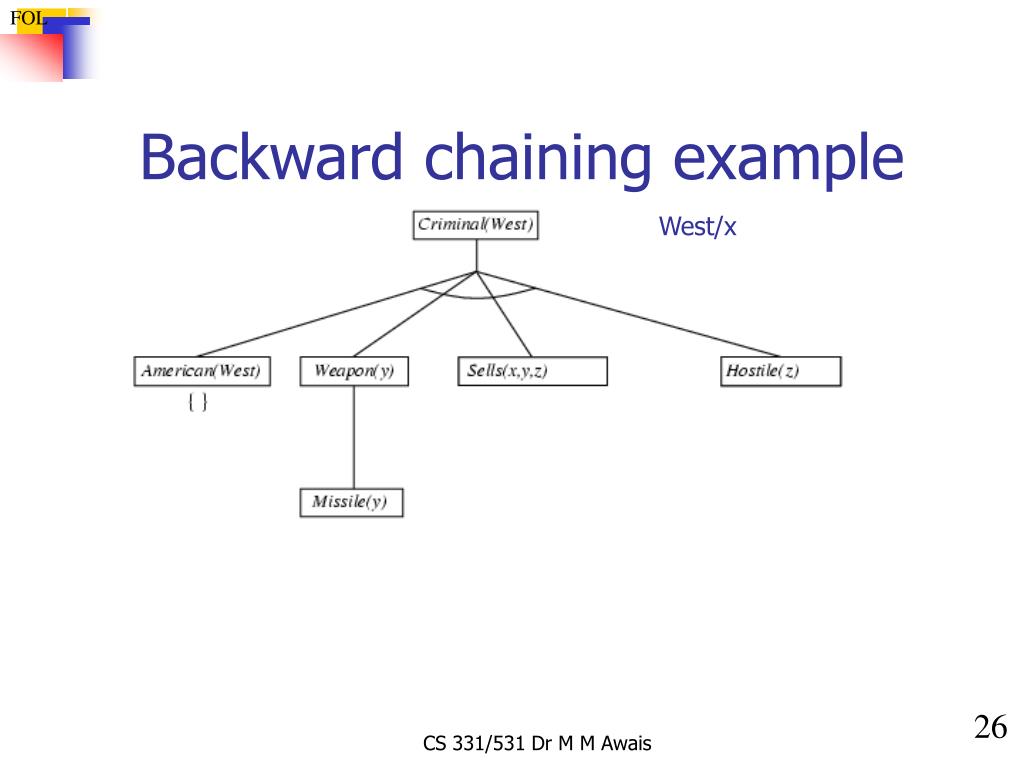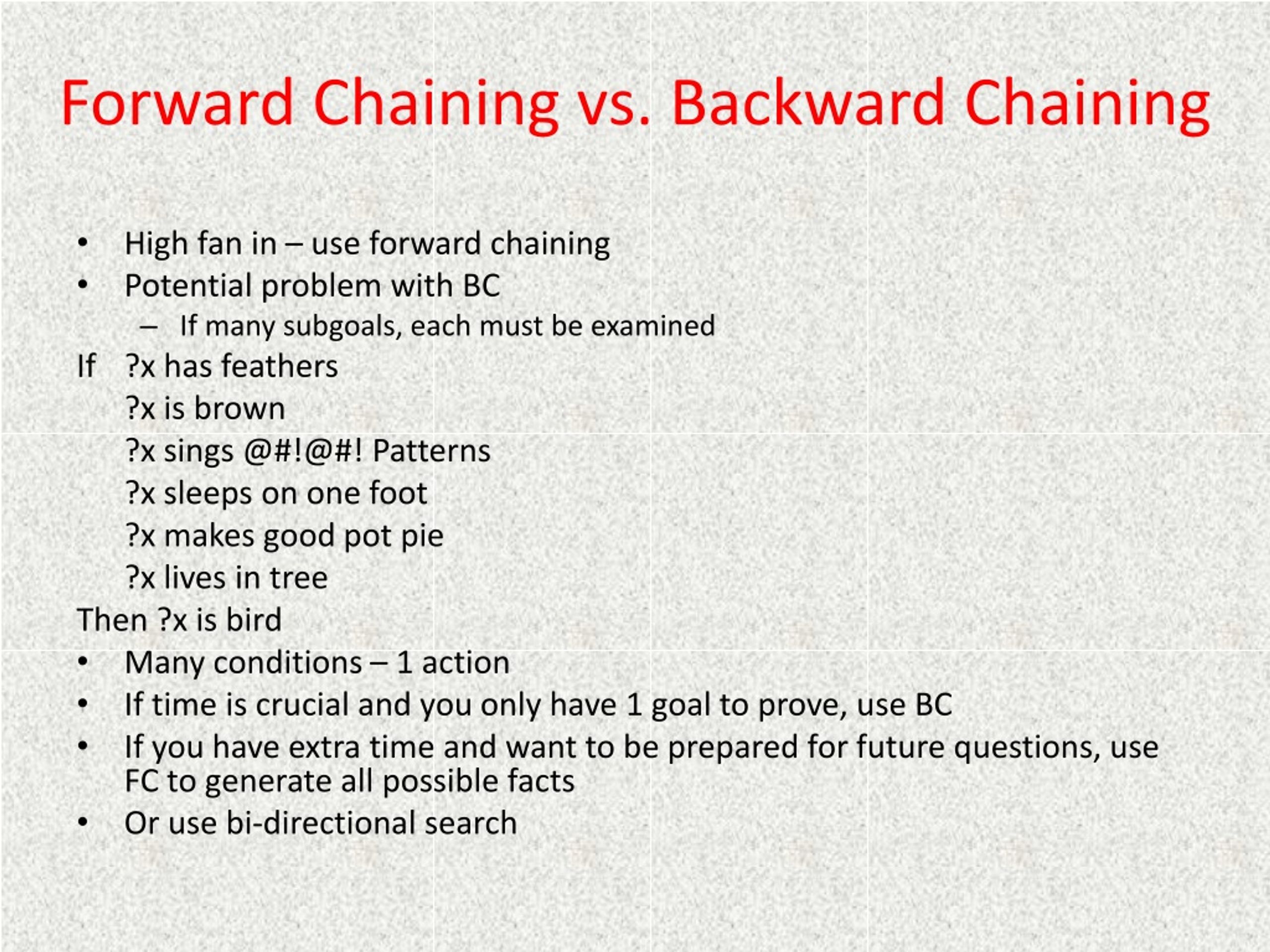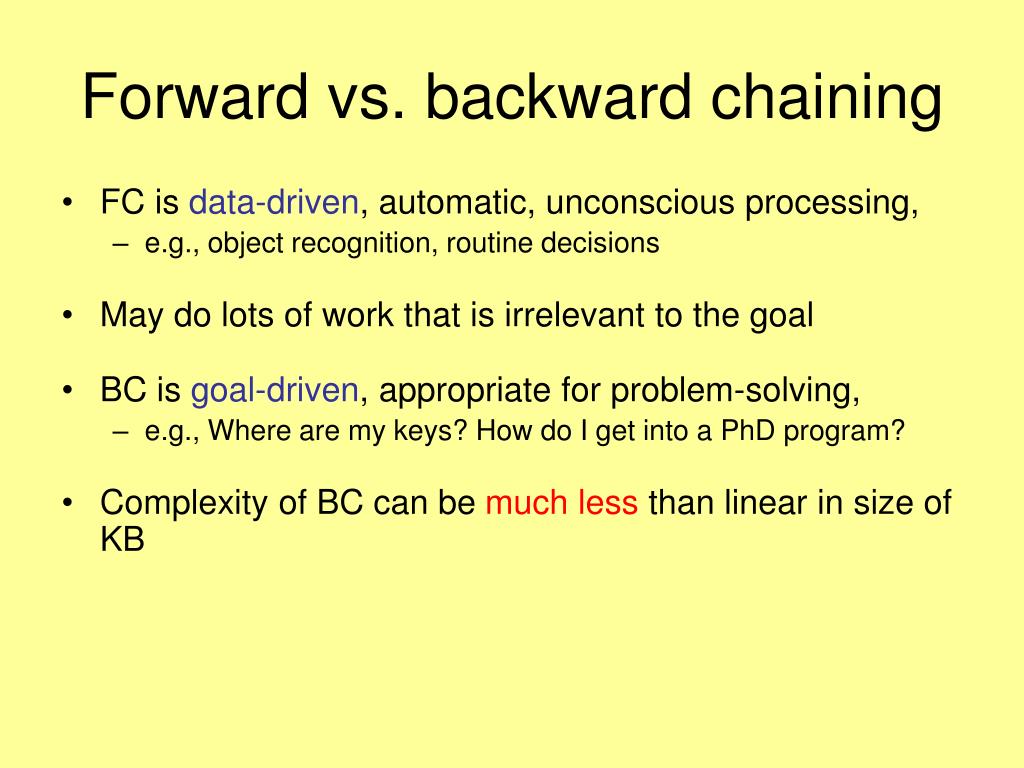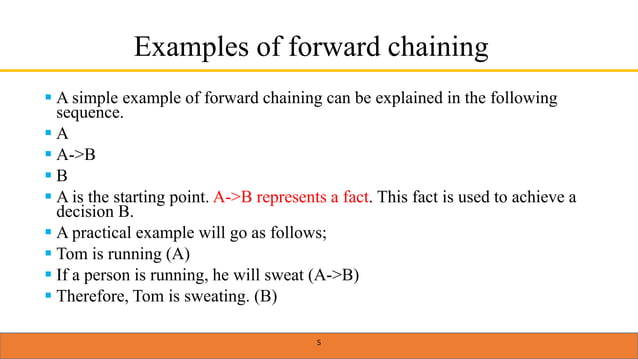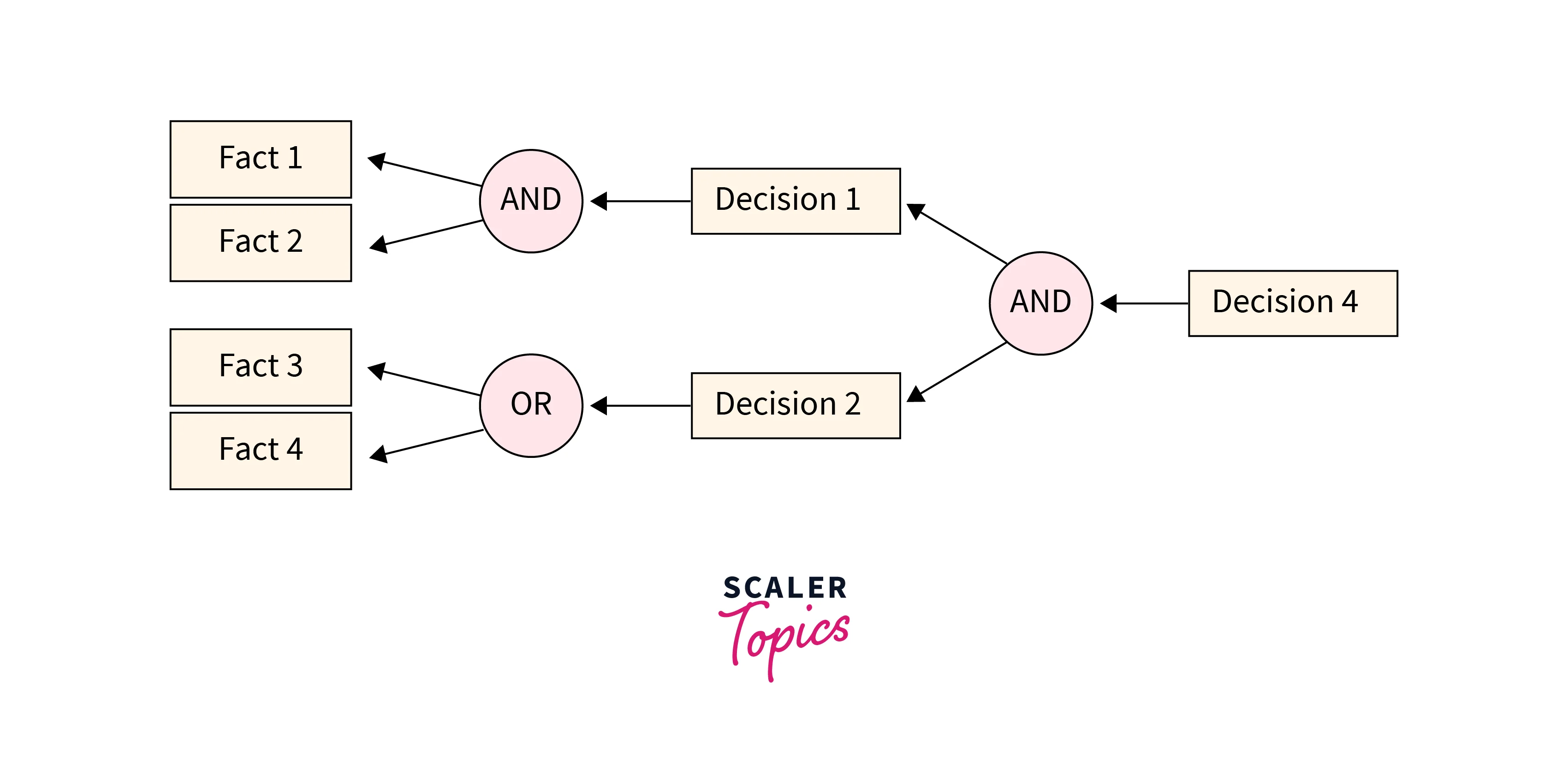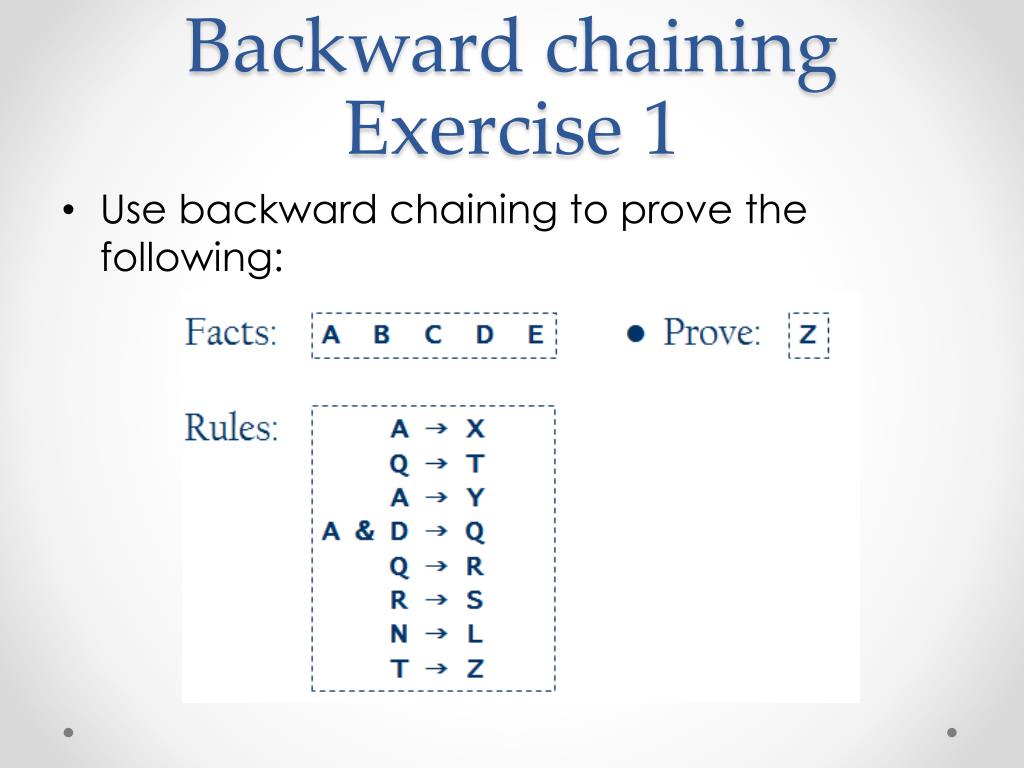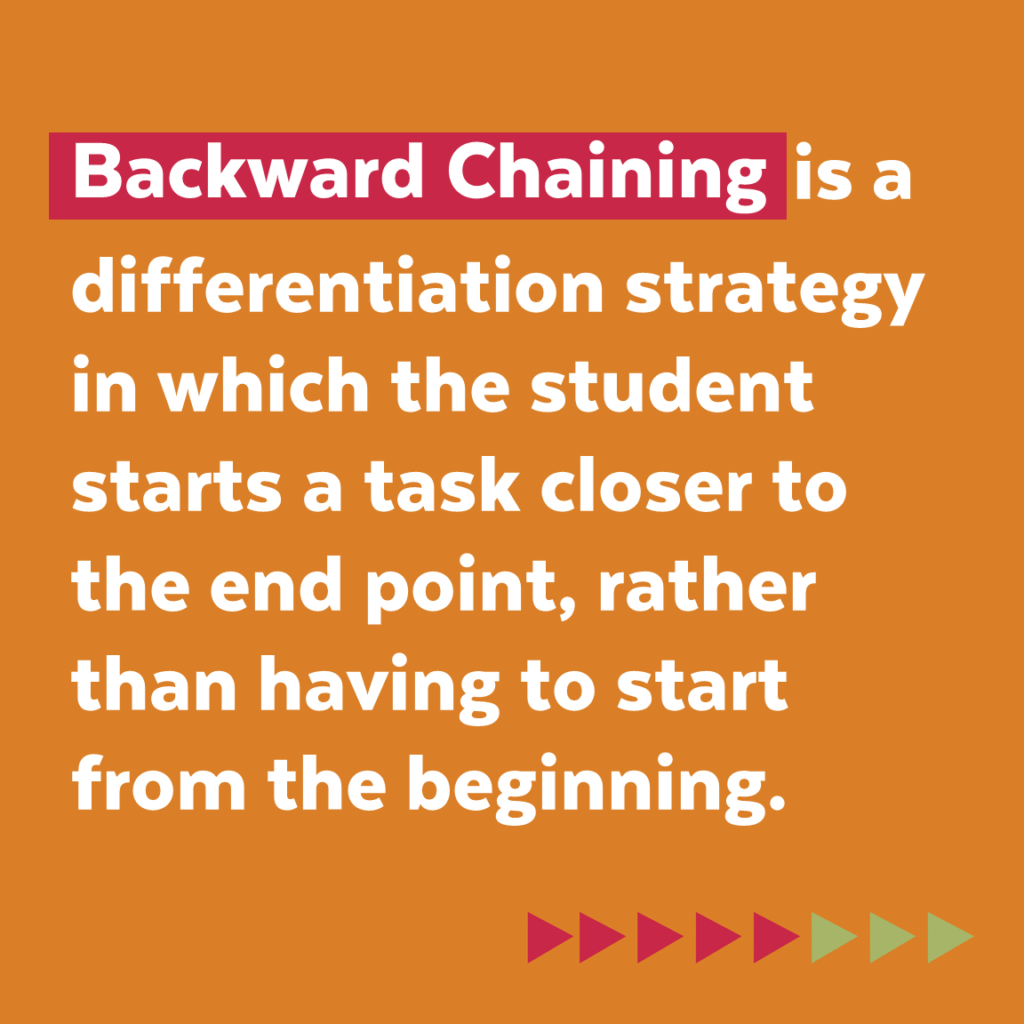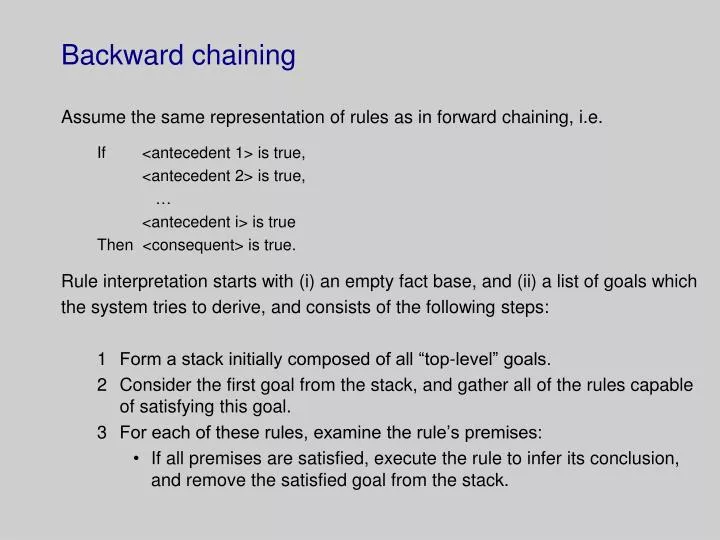Which Of The Following Is An Advantage Of Backward Chaining:

Imagine a detective standing before a complex web of clues, each leading back to a single, elusive truth. They don't start with assumptions; instead, they follow the threads, one by one, meticulously piecing together the puzzle from the desired outcome backwards. This methodical approach mirrors a powerful problem-solving technique in the world of artificial intelligence and beyond: backward chaining.
The advantage of backward chaining lies in its ability to efficiently target relevant information and confirm specific hypotheses. Instead of sifting through an overwhelming sea of data, it focuses only on the data necessary to prove a particular goal, making it a particularly valuable tool for applications like medical diagnosis, expert systems, and automated planning.
Unraveling Backward Chaining: A Deeper Dive
Backward chaining, also known as goal-driven reasoning, is a reasoning method used in artificial intelligence. It starts with a goal and works backward, determining what conditions must be met for that goal to be achieved. This is a contrasting approach to forward chaining, which starts with known facts and attempts to derive new conclusions.
To illustrate, consider a simple example: diagnosing a medical condition. Let's say the goal is to determine if a patient has the flu. Instead of examining every possible symptom, a backward chaining system would ask: "What conditions need to be true for the patient to have the flu?"
These conditions might include a fever, cough, and fatigue. The system then investigates if the patient has a fever, a cough, and fatigue. If all these conditions are met, the hypothesis (the patient has the flu) is confirmed.
The Efficiency Edge: Why Backward Chaining Shines
The primary advantage of backward chaining is its efficiency, particularly when dealing with a large knowledge base. By focusing solely on the information relevant to confirming the goal, it avoids unnecessary processing of irrelevant data. This targeted approach leads to faster and more efficient problem-solving.
Professor Margaret Boden, a renowned AI researcher, highlights this efficiency in her work on expert systems. "Backward chaining allows expert systems to emulate the reasoning of human experts, who often start with a hypothesis and then seek evidence to support it," she wrote in her influential text, "Artificial Intelligence: The Very Idea."
This contrasts sharply with forward chaining, which can explore numerous irrelevant paths before reaching a conclusion. Imagine a doctor investigating a patient's symptoms without a specific ailment in mind; they might order a wide range of tests, many of which prove unnecessary.
Applications in the Real World: From Medicine to Manufacturing
The real-world applications of backward chaining are vast and varied. In medical diagnosis, it is used to diagnose diseases based on symptoms, lab results, and patient history.
Expert systems in manufacturing utilize backward chaining to troubleshoot production problems. For example, if the goal is to identify the cause of a defective product, the system will work backward from the defect, examining potential causes until the root problem is found.
Automated planning systems use backward chaining to create plans for achieving goals. They start with the desired goal and determine the steps necessary to achieve it.
One notable example can be found in MYCIN, an early expert system designed for diagnosing bacterial infections. MYCIN used backward chaining to deduce the likely infection based on patient symptoms and lab results, offering treatment recommendations with a confidence factor.
Comparing Backward Chaining to Forward Chaining
While backward chaining excels in goal-oriented problem-solving, it's not always the best choice. Forward chaining is more suitable when the initial facts are known, and the goal is to derive all possible conclusions.
Consider a scenario where you have a set of rules about animal classifications. If you know the animal is a bird, forward chaining will deduce that it has feathers, lays eggs, and can probably fly. Here, you are deriving new facts based on known information.
Professor John McCarthy, a pioneer in AI, emphasized the importance of choosing the right reasoning method for the problem at hand. He argued that selecting the appropriate method could significantly improve the efficiency and effectiveness of an AI system.
The choice between backward chaining and forward chaining depends on the specific problem being solved. Backward chaining is often preferred when the goal is known, and the initial facts are uncertain, while forward chaining is better when the initial facts are known, and the goal is to derive new knowledge.
Limitations and Considerations
While backward chaining offers significant advantages, it's important to acknowledge its limitations. It can be inefficient if the goal is difficult to define or if there are many possible goals. In such cases, forward chaining or a combination of both approaches might be more effective.
Additionally, backward chaining can be challenging to implement if the knowledge base is incomplete or inconsistent. The system relies on accurate and complete information to make correct deductions.
Another consideration is the potential for circular reasoning. The system might become trapped in a loop, trying to prove the same condition over and over again.
These limitations highlight the importance of careful design and implementation when using backward chaining in AI systems.
Looking Ahead: The Future of Backward Chaining
Backward chaining remains a valuable tool in AI, particularly in applications where goal-oriented reasoning is essential. As AI technology continues to evolve, we can expect to see even more sophisticated uses of backward chaining in areas such as robotics, cybersecurity, and personalized medicine.
Researchers are also exploring ways to combine backward chaining with other AI techniques, such as machine learning and neural networks, to create more powerful and adaptable systems.
The future of backward chaining is bright, promising to contribute to even more innovative solutions in the years to come.
Conclusion: An Essential Tool in the AI Arsenal
In conclusion, the advantage of backward chaining lies in its ability to efficiently target relevant information and confirm specific hypotheses. By focusing solely on the data necessary to prove a particular goal, it avoids unnecessary processing and leads to faster and more efficient problem-solving.
From medical diagnosis to manufacturing, backward chaining is a versatile and powerful tool that continues to play a crucial role in the advancement of artificial intelligence.
As we continue to navigate the complexities of the digital age, backward chaining will undoubtedly remain an essential technique for solving problems and achieving goals in a wide range of applications, helping us to unlock new possibilities and create a more intelligent and efficient world.
